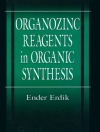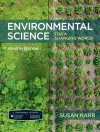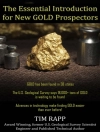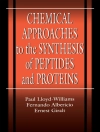With physical properties that often may not be described by the transposition of physical laws from 3D space across to 2D or even 1D space, low-dimensional solids exhibit a high degree of anisotropy in the spatial distribution of their chemical bonds. This means that they can demonstrate new phenomena such as charge-density waves and can display nanoparticulate (0D), fibrous (1D) and lamellar (2D) morphologies.
This text presents some of the most recent research into the synthesis and properties of these solids and covers:
- Metal Oxide Nanoparticles
- Inorganic Nanotubes and Nanowires
- Biomedical Applications of Layered Double Hydroxides
- Carbon Nanotubes and Related Structures
- Superconducting Borides
Introducing topics such as novel layered superconductors, inorganic-DNA delivery systems and the chemistry and physics of inorganic nanotubes and nanosheets, this book discusses some of the most exciting concepts in this developing field.
Additional volumes in the Inorganic Materials Book Series:
Molecular Materials
Functional Oxides
Porous Materials
Energy Materials
All volumes are sold individually or as comprehensive 5 Volume Set.
Tabela de Conteúdo
Inorganic Materials Series Preface ix
Preface xi
List of Contributors xiii
1 Metal Oxide Nanoparticles 1
Alan V. Chadwick and Shelly L.P. Savin
1.1 Introduction 1
1.2 Oxide Types; Point Defects and Electrical Conductivity 4
1.3 Preparation of Nanoionic Materials 10
1.4 Characterisation 1
1.4.1 Determination of Particle Size and Dispersion 13
1.4.2 Characterisation of Microstructure 16
1.4.3 Transport Measurements 20
1.5 Review of the Current Experimental Data and their Agreement with Theory 30
1.5.1 Microstructure 30
1.5.2 Transport 31
1.5.3 Mechanical Properties 42
1.5.4 Magnetic Properties 44
1.6 Applications 46
1.6.1 Gas Sensors 46
1.6.2 Batteries 50
1.6.3 Fuel Cells 54
1.6.4 Catalysis and Adsorption 55
1.6.5 Biomedical Applications of Magnetic Nanocrystalline Oxides 60
1.7 Overview and Prospects 62
References 65
2 Inorganic Nanotubes and Nanowires 77
C.N.R. Rao, S.R.C. Vivekchand and A. Govindaraj
2.1 Introduction 77
2.2 Inorganic Nanotubes 78
2.2.1 Synthesis 79
2.2.2 Functionalisation and Solubilisation 114
2.2.3 Properties and Applications 115
2.3 Nanowires 116
2.3.1 Synthesis 116
2.3.2 Self-Assembly and Functionalisation 127
2.3.3 Properties and Applications 130
2.4 Outlook 145
References 146
3 Biomedical Applications of Layered Double Hydroxides 163
Jin-Ho Choy, Jae-Min Oh and Dae-Hwan Park
3.1 Introduction 163
3.1.1 Layered Nanohybrids 163
3.1.2 Layered Nanomaterials 164
3.2 Nanomaterials for Biological Applications 167
3.2.1 Layered Nanoparticles for Biomedical Applications 167
3.2.2 Cellular Uptake Pathway of Drug-Inorganic Nanohybrids 174
3.2.3 Targeting Effect of Drug-Inorganic Nanohybrids 178
3.3 Nanomaterials for DNA Molecular Code System 180
3.3.1 Genetic Molecular Code in DNA 180
3.3.2 Chemically and Biologically Stabilised DNA in Layered Nanoparticles 180
3.3.3 Invisible DNA Molecular Code System for Ubiquitous Application 183
3.4 Conclusion 184
References 184
4 Carbon Nanotubes and Related Structures 189
M. Ángeles Herranz, Juan Luis Delgado and Nazario Martín
4.1 Introduction 189
4.2 Endohedral Fullerenes 191
4.2.1 Endohedral Metallofullerenes 191
4.2.2 Surgery of Fullerenes 197
4.3 Carbon Nanotubes 200
4.3.1 Covalent Functionalisation 201
4.3.2 Noncovalent Functionalisation 205
4.3.3 Endohedral Functionalisation 208
4.4 Other Carbon Nanotube Forms 209
4.4.1 Cup-Stacked Carbon Nanotubes 209
4.4.2 Carbon Nanohorns 210
4.4.3 Carbon Nanobuds 211
4.4.4 Carbon Nanotori 212
4.5 Carbon Nano-Onions 213
4.6 Graphenes 216
4.7 Summary and Outlook 219
Acknowledgements 219
References 220
5 Magnesium Diboride Mg B 2 : A Simple Compound with Important Physical Properties 229
Michael Pissas
5.1 Introduction 229
5.1.1 Electronic Structure of Mg B 2 232
5.1.2 Substitutions in Mg B 2 Superconductor 235
5.2 Preparation of Pure and Alloyed Mg B 2 236
5.2.1 Preparation of Pure and Alloyed Polycrystalline Mg B 2 236
5.2.2 Single Crystal Growth of Pristine and Alloyed Mg B 2 245
5.3 Physical Properties of Mg B 2 246
5.3.1 Boron Isotope Effect 246
5.3.2 Evidence for Two Energy Gaps in Mg B 2 248
5.3.3 Dependence of the Superconducting Transition Temperature on Hydrostatic Pressure 249
5.3.4 Resistivity Measurements in Mg B 2 250
5.4 Flux Line Properties in Single Crystals of Mg B 2 , Mg 1 x Al x B 2 and Mgb 2 x c x 256
5.4.1 Type II Superconductors 256
5.4.2 Flux Line Properties of Pristine Mg B 2 259
5.4.3 Aluminium Substituted Single Crystals 266
5.4.4 Carbon Substituted Single Crystals 271
5.4.5 Two-Band Superconductivity and Possible Implications on the Vortex Matter Phase Diagram 275
5.5 Conclusions 278
References 278
Index 287
Sobre o autor
Professor Duncan Bruce graduated from the University of Liverpool (UK), where he also gained his Ph D. In 1984, he took up a Temporary Lectureship in Inorganic Chemistry at the University of Sheffield and was awarded a Royal Society Warren Research Fellowship. He was then appointed Lecturer in Chemistry and later Senior Lecturer and co-director of the Sheffield Centre for Molecular Materials. In 1995, he was appointed Professor of Inorganic Chemistry at the University of Exeter. Following the closure of Exeter’s chemistry department in 2005, Professor Bruce took up his present position as Professor of Materials Chemistry in York. He is currently Chair of the Royal Society of Chemistry Materials Chemistry Forum. His current research interests include liquid crystals and silicates. His work has been recognized by various awards including the British Liquid Crystal Society’s first Young Scientist prize and the RSC’s Sir Edward Frankland Fellowship and Corday-Morgan Medal and Prize. He has held visiting positions in Australia, France, Japan and Italy.
Dr. Richard Walton, who was also formerly based in the Department of Chemistry at the University of Exeter, now works in the Department of Chemistry at the University of Warwick. His research group works in the area of solid-state materials chemistry and has a number of projects focusing upon the synthesis, structural characterization and properties of inorganic materials.
Dermot O’Hare is Professor in the Chemistry Research Laboratory at the University of Oxford.
His research group has a wide range of research interests. They all involve synthetic chemistry ranging from organometallic chemistry to the synthesis of new microporous solids.
Duncan Bruce and Dermot O’Hare have edited several editions of Inorganic Materials published by John Wiley & Sons Ltd.












